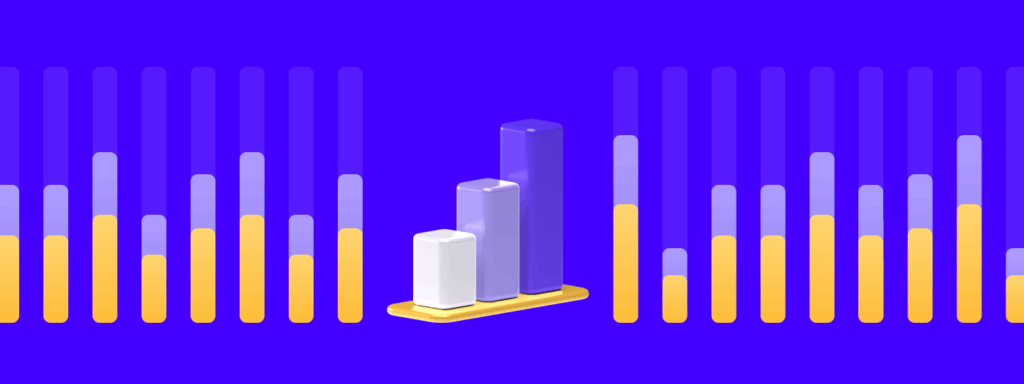From Aesthetics to Analytics: How Modern Web Design Companies Blend Creativity with Data-Driven Strategies
May 05, 2025 ● 10 Mins Read

Table of Contents
Introduction
In an age where creativity and data analytics are converging, leading web design companies have evolved to balance artistic vision with the power of data. This hybrid approach allows them to not only create visually stunning websites but also ones that are fine-tuned for performance and conversion. This blog delves into how modern web design companies are seamlessly merging aesthetics with analytics, giving businesses a competitive edge in the digital landscape.

Understanding the Aesthetic Foundation
Creativity remains at the core of web design. Eye-catching visuals, intuitive layouts, and user-friendly interfaces are crucial for capturing attention and maintaining interest. The creative side of web design involves understanding color theory, typography, and the psychology of user interaction. However, today’s web designers go beyond the surface; each visual element is chosen not just for its appeal but for its impact on user engagement and navigation.
Leveraging Data to Guide Design Choices
Modern web design companies are incorporating data analytics from the very beginning of the design process. They use data to understand user behavior, identify trends, and pinpoint problem areas within a website. Key metrics, such as bounce rates, time on page, and conversion paths, offer insights into what works and what doesn’t. This data-driven approach informs decisions on layout, color schemes, content placement, and even button sizes.
Heatmaps & User Behavior Tracking : Tools like heatmaps reveal how users interact with a page where they click, how far they scroll, and what elements attract their attention. This information is crucial for creating intuitive and user-friendly designs.
A/B Testing & Experimentation: A/B testing allows designers to compare different versions of a webpage to see which performs better. This iterative experimentation helps in optimizing each design aspect for maximum impact.
Creating a Synergy Between Art and Science
The real challenge lies in integrating creativity with analytics seamlessly. A design that’s purely aesthetic may fail to engage users, while a data-driven design devoid of creativity can appear sterile. Modern web design companies are finding the sweet spot by incorporating data into the creative process without sacrificing visual appeal.
Personalized User Experiences: Data allows designers to create highly personalized experiences. By understanding user demographics and behavior patterns, companies can tailor content, imagery, and calls-to-action to fit specific audience segments.
Adaptive Design Based on Analytics: Using analytics, companies are creating adaptive designs that change based on user behavior. If data shows that mobile users are more likely to convert through a simplified layout, the design adapts to prioritize key elements for mobile devices.
Data-Driven Content Creation
Content plays a vital role in web design, and data-driven strategies are now being applied to content decisions. Web design companies use analytics to determine what type of content engages visitors and drives them to take action. They track user behavior to refine everything from blog topics to product descriptions, ensuring that the language and format resonate with the target audience.
SEO & Content Alignment : Data analysis also guides search engine optimization (SEO) strategies. Companies identify which keywords bring traffic, what pages perform well, and how content should be adjusted to maximize visibility and relevance.
Measuring the Success of Blended Strategies
Web design companies don’t just stop at creating visually compelling and data-informed designs, they constantly measure the effectiveness of their work. Success metrics are clearly defined and regularly analyzed to determine the impact of design choices. This cycle of measuring, analyzing, and refining ensures continuous improvement.
Performance Analytics: Tools like Google Analytics provide insights into page load times, bounce rates, and site speed, directly affecting user experience. A website’s visual appeal and performance must work in harmony to achieve business goals.
User Feedback & Data Integration: Collecting user feedback through surveys or behavioral data allows companies to tweak designs in real time. This customer-centric approach enhances user satisfaction and builds brand loyalty.
These security measures protect against potential data breaches, downtime, and other risks, ensuring that logistics operations remain uninterrupted and secure.

The Future of Data-Driven Web Design
As technology advances, the integration of aesthetics and analytics will become even more seamless. With AI-driven design tools, predictive analytics, and machine learning, the future of web design is set to push the boundaries of personalization and engagement. Companies that effectively blend creativity with data will continue to stand out, offering users not just a visually pleasing experience but an intuitive and highly optimized digital journey.
The blending of aesthetics and analytics represents a paradigm shift in the web design industry. Modern web design companies understand that a website must do more than look good, it must perform. By merging creativity with data-driven strategies, they craft websites that are not only visually stunning but also highly effective. This holistic approach ensures that every pixel, interaction, and piece of content serves a purpose, creating a digital experience that drives results and leaves a lasting impression. The future belongs to those who can master both the art and science of web design.
From coding dynamic websites to smashing sixes on the cricket field, I thrive on precision and strategy. Beyond work, I enjoy the thrill of cricket, where every shot demands skill and timing. As a website developer, I bring the same passion to crafting seamless digital experiences, ensuring each design is intuitive, engaging, and built for impact.

Muralidharan
Web Developer




